When winter storms roll in and temperatures plummet, your furry companion depends on you more than ever. A blizzard brings unique challenges that can turn a routine day into a survival situation for our four-legged friends. Understanding how to protect your dog during extreme winter weather isn’t just about comfort – it’s about keeping them safe and healthy when Mother Nature unleashes her fury.
The truth is, many dog owners underestimate the serious risks that blizzards pose to their pets. Yet with the right preparation and knowledge, you can create a warm haven for your dog even when the world outside turns into a frozen wasteland. Whether you’re facing your first winter storm with a new puppy or you’re a seasoned dog owner looking to improve your cold-weather game, these essential strategies will help you navigate the challenges ahead. So let’s dive into the crucial steps that could make all the difference when the snow starts flying.
Understanding Your Dog’s Cold Weather Vulnerability
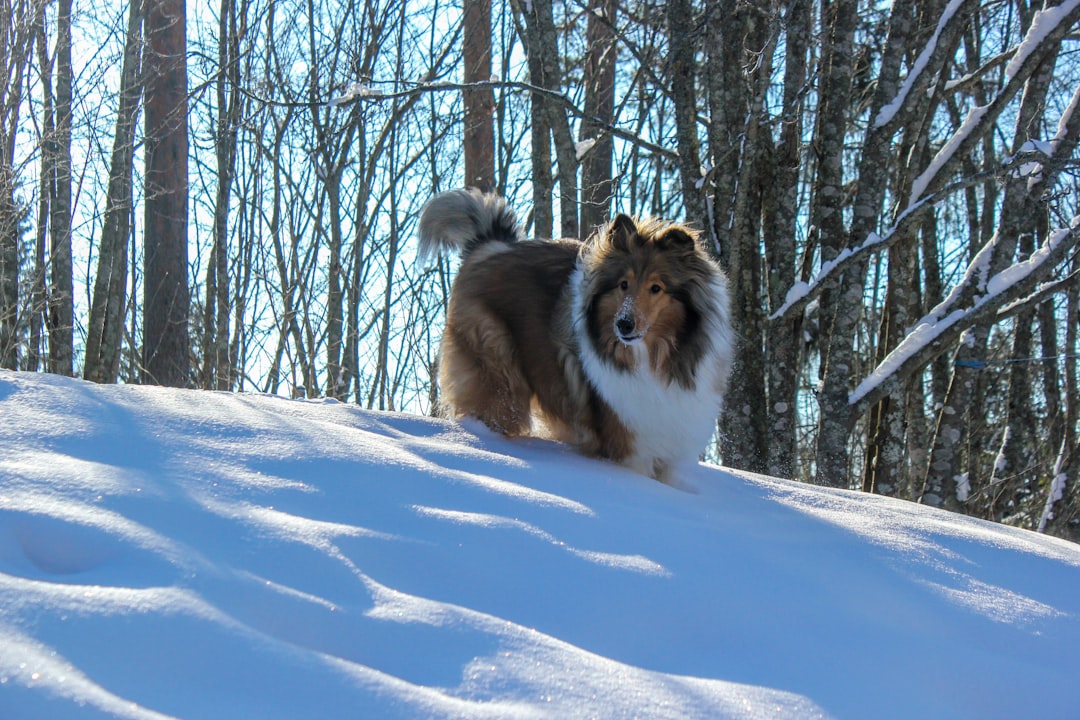
Many people think that dogs’ fur makes them more resistant to cold weather, but that is not necessarily true. Cold tolerance can vary based on a pet’s breed, age, body fat percentage, activity level, and overall health. While huskies are bred for colder climates and are therefore more tolerant of cold weather, most dogs are susceptible to frostbite and hypothermia if left outside in cold weather for a long period of time. Your golden retriever might love romping in the snow, but they’re not necessarily equipped for the prolonged exposure that comes with a full-blown blizzard.
Small-sized dogs have a harder time staying warm compared to larger breeds. Puppies cannot properly regulate their body temperature and have very little body fat, making them more susceptible to the cold. Short and thinly-coated breeds will not tolerate the cold as well as thick, double-coats, such as Siberian Huskies and Malamutes. Older animals, underweight animals or those with other medical conditions may have difficulty staying warm or regulating their body temperature in the cold. Think of your senior Chihuahua versus a young Alaskan Malamute – they’re playing entirely different games when it comes to winter survival.
Creating a Safe Indoor Environment During Storms

Make sure your companion animal has a warm place to sleep, off the floor and away from all drafts. A cozy dog or cat bed with a warm blanket or pillow is perfect. During a blizzard, your dog’s regular sleeping spot might not cut it if it’s near windows or exterior walls where cold air seeps in. Consider moving their bed to the most insulated area of your home, perhaps an interior room or basement that maintains steady warmth.
Use space heaters with caution around pets, because they can cause burns or they can be knocked over, potentially starting a fire. Check your furnace before the cold weather sets in to make sure it’s working efficiently, and install carbon monoxide detectors to keep your entire family safe from harm. The last thing you want during a blizzard is a heating system failure or a dangerous situation with supplemental heating sources. Your dog’s enthusiasm for investigating warm objects could lead to serious burns if space heaters aren’t properly protected.
Essential Emergency Supplies and Preparedness
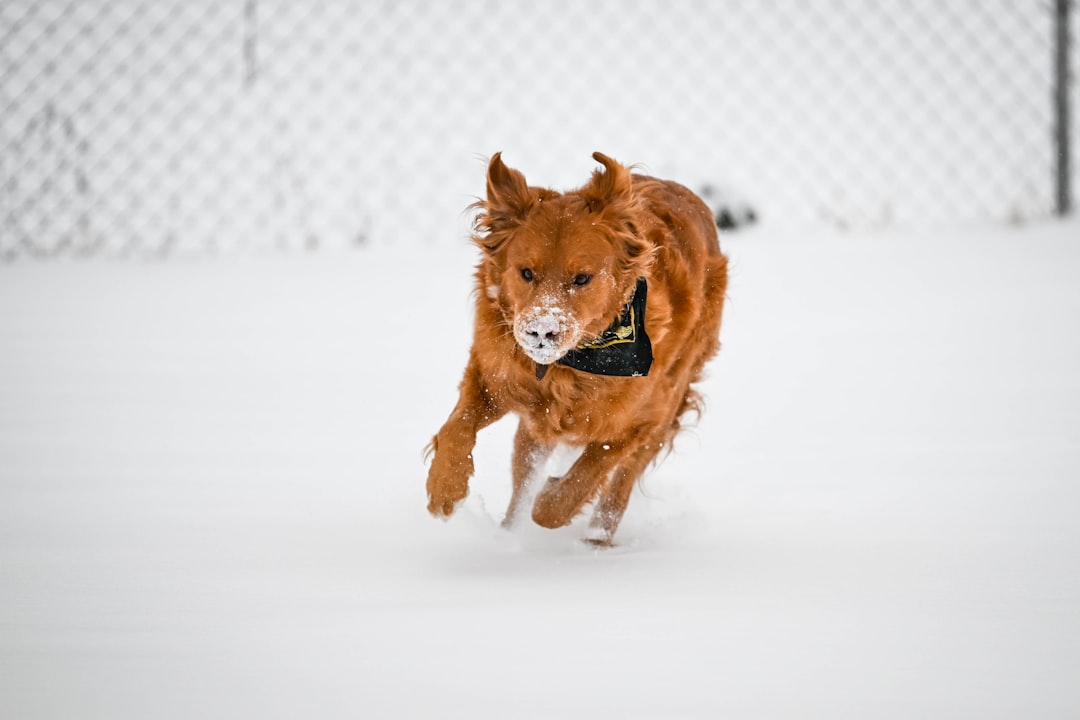
Winter can bring blizzards and power outages. Prepare an emergency kit and include your pet in your plans. Have enough food, water and medicine (including any prescription medications as well as heartworm and flea/tick preventives) on hand to get through at least five days. When the power goes out and roads become impassable, you can’t rely on quick trips to the pet store. Stock up on everything your dog needs well before storm season hits.
Pack extra blankets, towels, and even battery-powered heating sources designed for pets. Include a manual can opener if your dog eats canned food, and consider having backup water sources in case your pipes freeze. For outdoor pets, you may want to increase calories in the winter as they will need this to generate body heat and energy. Prior to any increase in calories, speak to your veterinarian about optimal nutrition for your pet during cold weather. During a blizzard, your dog will burn more calories just trying to stay warm, even indoors.
Managing Outdoor Bathroom Breaks Safely
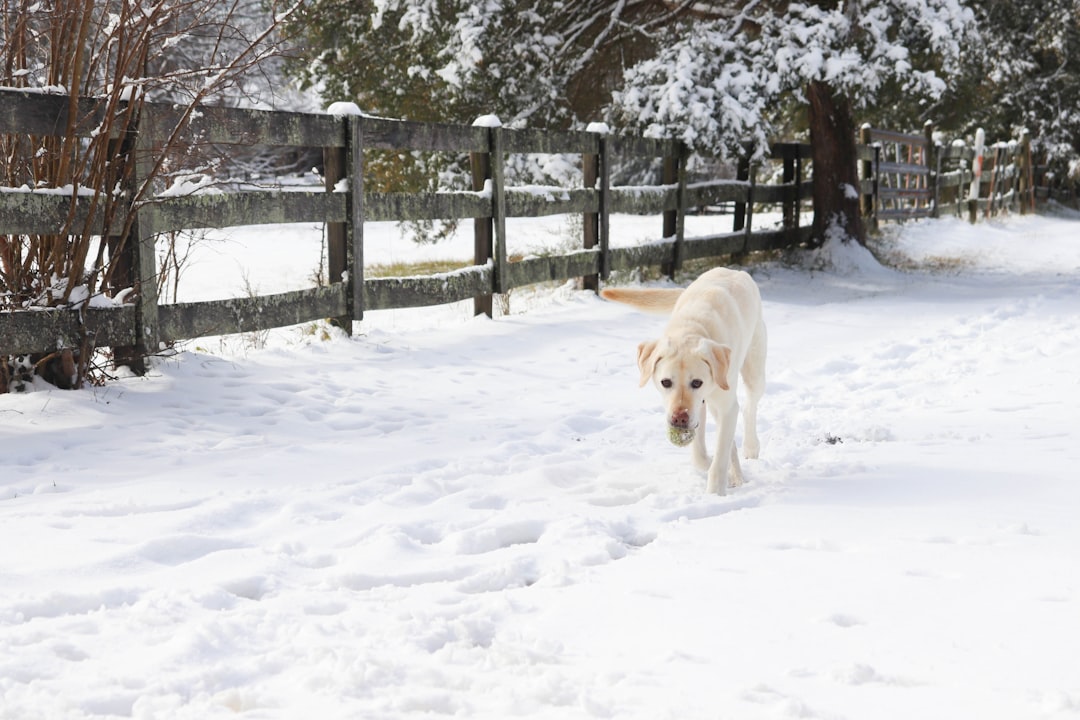
Never let your dog off leash on snow or ice, especially during a snowstorm. Dogs can lose their scent in the snow and easily become lost. Dogs can easily become lost during winter storms, so make sure your dog always wears an ID tag. During blizzard conditions, visibility drops to nearly zero, and familiar landmarks disappear under snow. Your dog could become disoriented just steps from your door.
Keep outdoor breaks short and purposeful – this isn’t the time for leisurely sniffing sessions. Keep your dog’s outdoor playtime limited to 30 minutes or less, especially if they are small, elderly, or have short fur. During walks, try using pet-safe boots and sweaters to keep them warm. Watch for behavioral changes that signal your dog is too cold, such as lifting paws frequently, whining, or reluctance to continue walking. These are your dog’s way of saying they need to get back inside immediately.
Protecting Paws from Ice, Salt, and Chemical Hazards
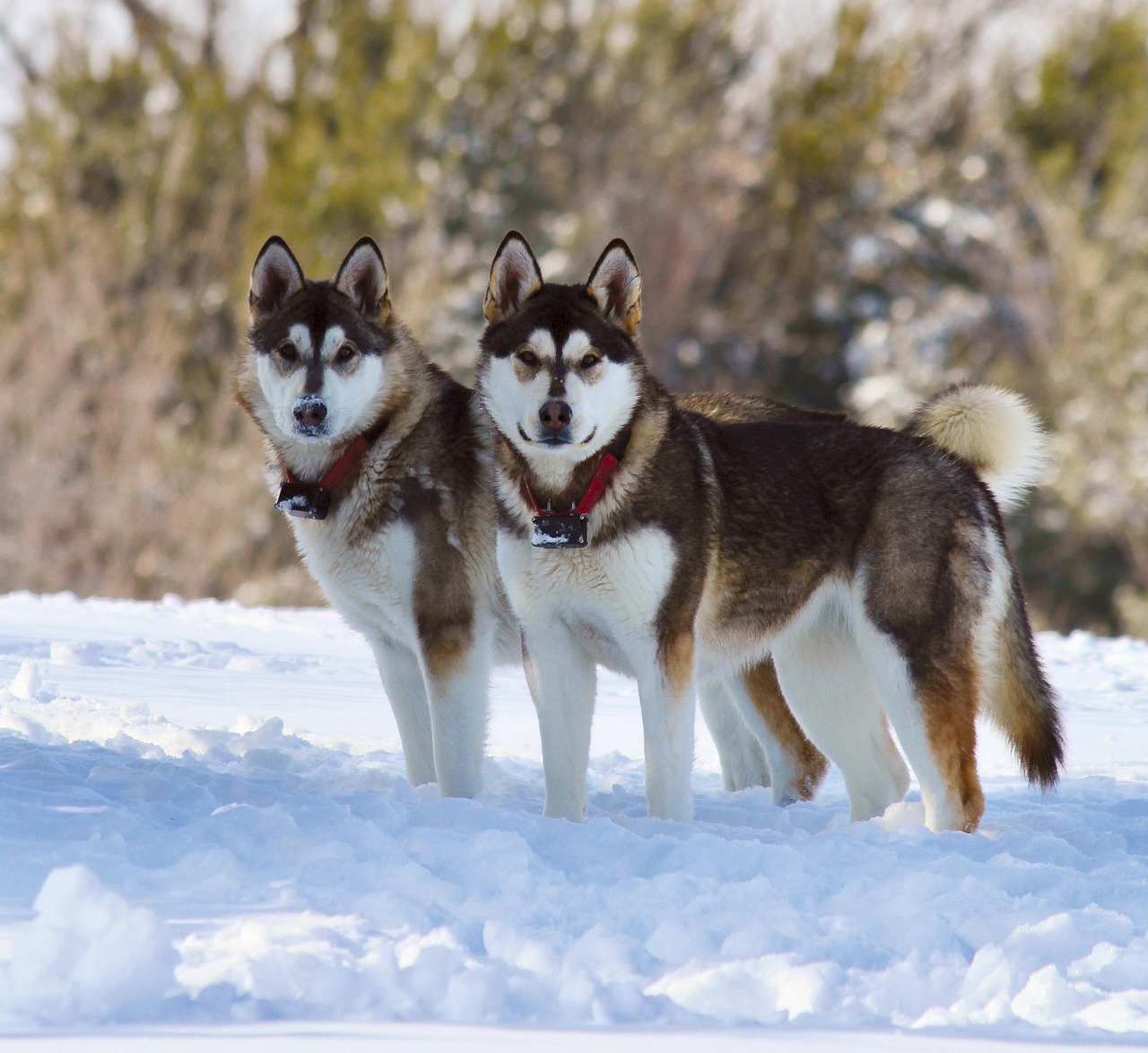
Massage petroleum jelly or other vet-approved paw protectants into paw pads before going outside to protect from salt and chemical agents. Booties can provide even more coverage and can also prevent sand and salt from getting lodged between bare toes and causing irritation. Use pet-friendly ice melts whenever possible. During blizzards, municipalities often use more aggressive de-icing chemicals that can cause severe burns to your dog’s sensitive paw pads.
Wipe down your dog’s paws, legs and belly after walks in the winter to remove any potential chemicals they may have picked up from walking along the road. Salt and other de-icers used on the roads can irritate paws, and if ingested, cause ulcerations or irritation to the mouth and digestive tract. Make this post-walk routine as important as the walk itself. Wipe off their paws before they come inside to remove any salt or antifreeze residue they might lick off. This will also warm the paws faster. Keep warm, damp towels ready by your door for this essential cleanup.
Recognizing and Responding to Cold-Related Emergencies
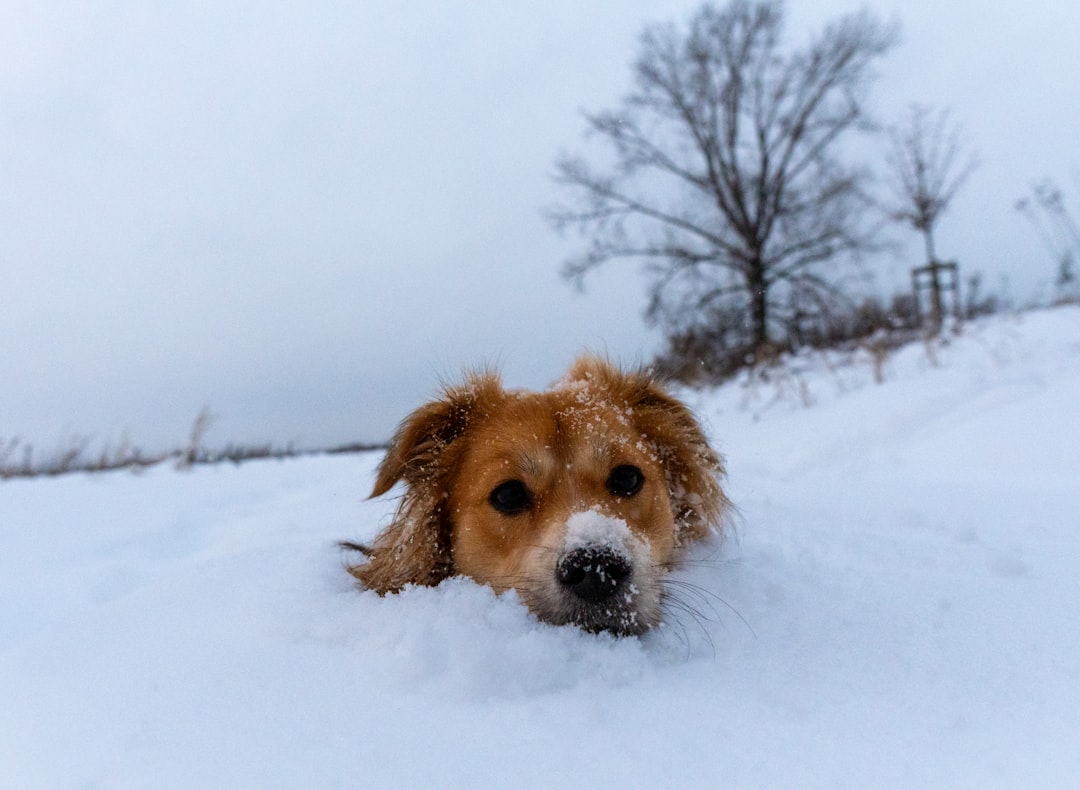
Mild hypothermia: Shivering (a natural response to cold), cold ears, paws, or tail and lethargy or a reluctance to move. Moderate hypothermia: intense shivering or shivering that won’t stop, weakness and clumsiness, pale gums or slowed breathing. Severe hypothermia: Stiffness and muscle weakness, dilated pupils or difficulty breathing, and unconsciousness. Knowing these warning signs could save your dog’s life during a blizzard emergency.
The clinical signs associated with frostbite include: discoloration of the affected area of skin – often pale, gray or bluish, coldness and/or brittleness of the area when touched. As frostbitten tissues thaw, they may become red and painful due to inflammation. The clinical signs of frostbite may take several days to appear, especially if the affected area is small. If you think your pet has frostbite, go indoors where it’s warm right away. Throw a towel in the dryer and let it get warm – not hot! Wrap the dry, warm towel around your pet and seek veterinary care as soon as you can. Whatever you do, don’t massage or rub the frostbitten area.
Planning for Extended Power Outages and Isolation
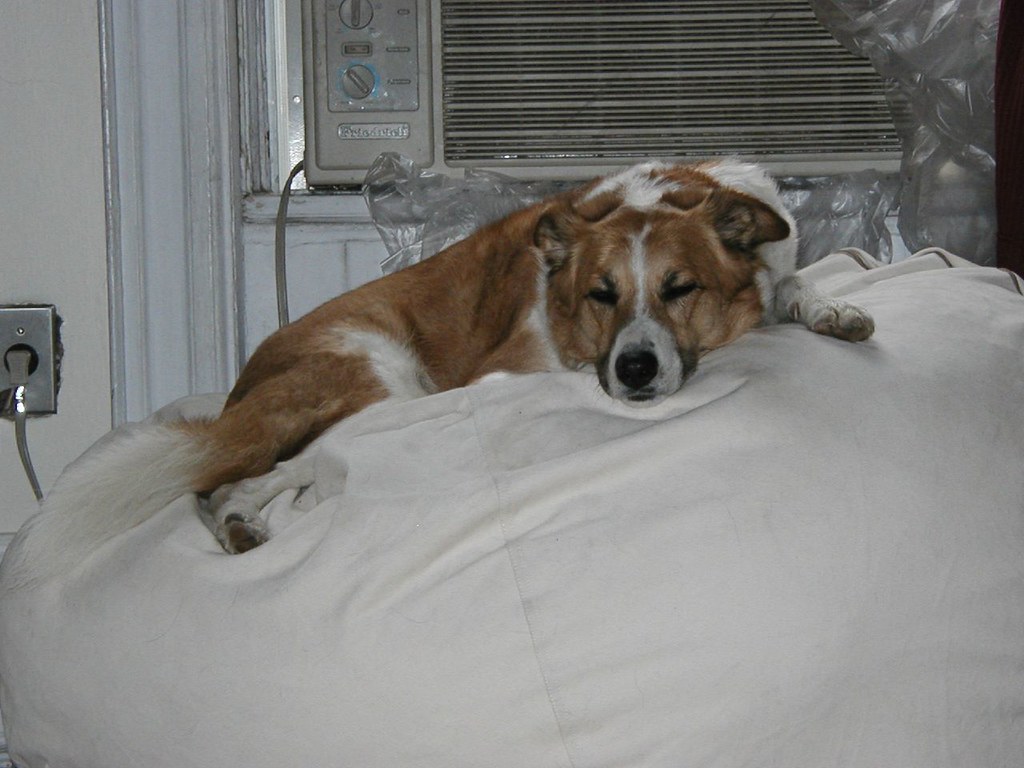
Blizzards often bring power outages that can last for days, turning your warm home into a potentially dangerous environment for your dog. Have alternative heating sources ready, such as sleeping bags rated for cold weather that you and your dog can share for body warmth. Consider investing in a generator, but never use it indoors or in attached garages due to carbon monoxide risks. The best way to warm up a chilly pet is to wrap them in a warm, out-of-the-dryer towel. Smaller pets warm up fastest with skin-to-skin contact.
Stock up on extra dog food and water, as delivery services and pet stores may be closed for extended periods. Keep battery-powered or hand-crank radios to monitor weather updates and emergency information. If you have a fireplace, ensure proper ventilation and never leave your dog unsupervised near open flames. The winter can be a beautiful time of year for you to enjoy with your beloved pets. Please make this time safer by following these helpful tips – and always remember that we are here if you need us.
Caring for your dog during a blizzard requires preparation, vigilance, and a deep understanding of your pet’s individual needs. The key is thinking ahead rather than reacting when the storm hits. From creating a warm indoor sanctuary to recognizing the early signs of cold-related emergencies, every precaution you take could mean the difference between a safe winter experience and a dangerous situation.
Remember that your dog looks to you as their protector and provider, especially when harsh weather makes the outside world inhospitable. By following these guidelines and trusting your instincts about your pet’s comfort and safety, you’ll both weather any storm that comes your way. What would you have guessed were the most dangerous aspects of blizzard conditions for dogs?

Gargi from India has a Masters in History, and a Bachelor of Education. An animal lover, she is keen on crafting stories and creating content while pursuing a career in education.






